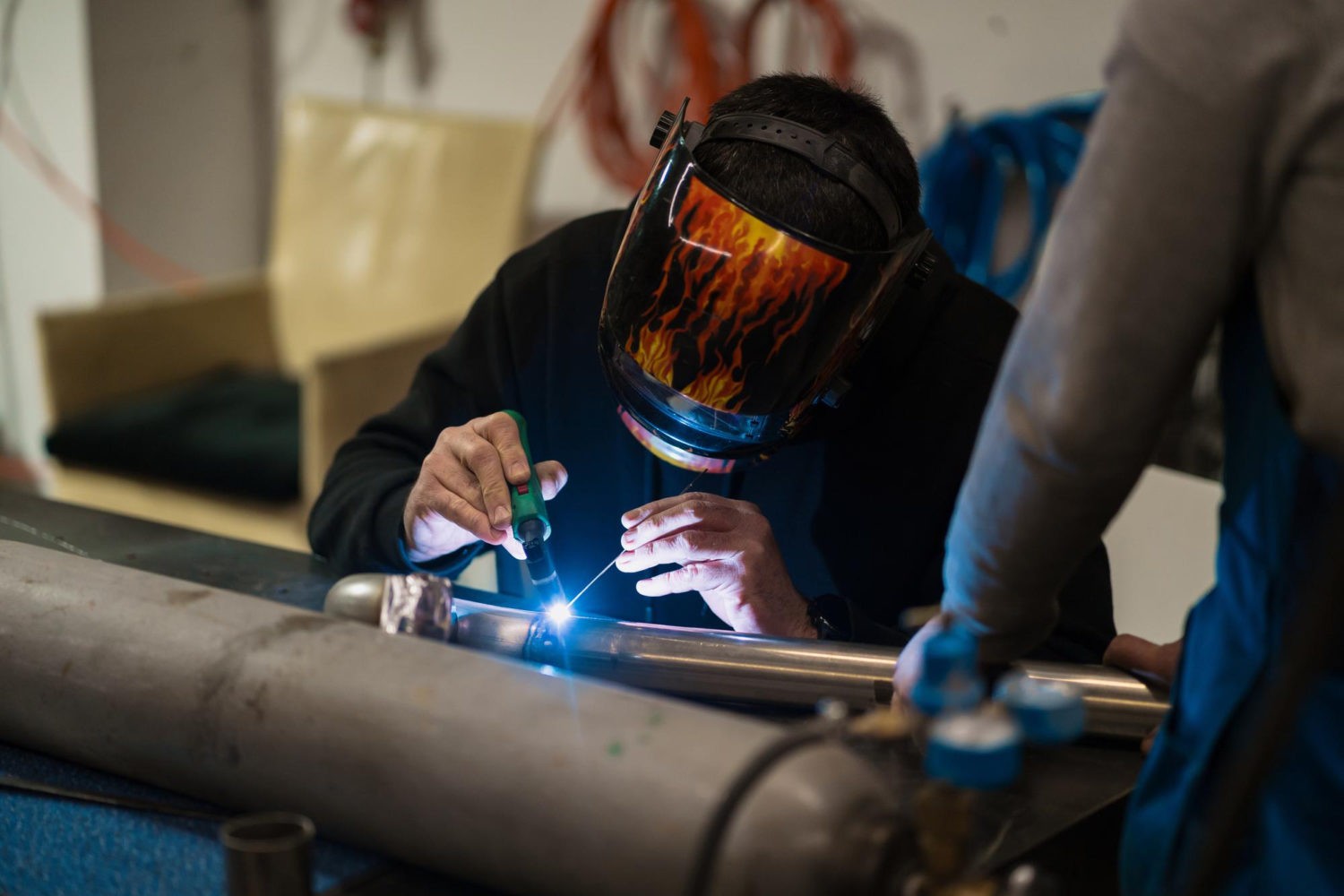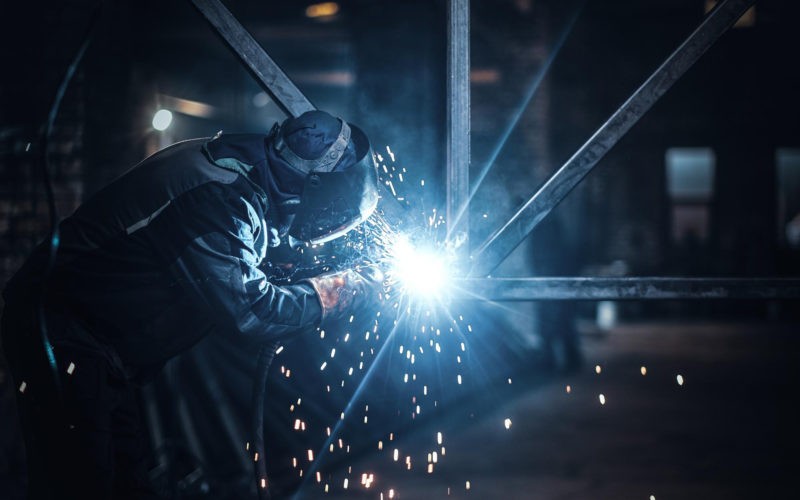Industrial laser welders carry power and precision, but also serious hazards. Whether it’s beam exposure, thermal effects, electrical risks, or airborne contaminants, missteps can lead to injury, equipment damage, or regulatory noncompliance. Because of this, deploying a laser welder in any facility demands deep attention to safety regimes, standards alignment, and robust oversight.
In this article, you’ll gain clarity on laser classifications, hazard zones, standard frameworks (ANSI, OSHA, ISO), safety program design, engineering and administrative controls, PPE selection, audit practices, and how to mesh all this with reliable operations. Effective safety isn’t an add-on; it’s a foundation for sustainable use.
Laser Classification & Hazard Framework
Laser Classes & Risk Levels
Lasers are categorized by class based on the risk they pose. Class 3B and especially Class 4 lasers represent the highest hazard levels: potential eye or skin damage, and in Class 4, the ability to ignite materials. Safe designs must assume worst-case exposures and institute rigorous controls.
The concept of Maximum Permissible Exposure (MPE) is central — this is the safe exposure threshold for ocular or dermal tissue. Designs must ensure that any possible exposure remains below MPE under all expected operational and misalignment scenarios.
Nominal Hazard Zone & Controlled Areas
Where exposure exceeds MPE, the area is designated as a Laser Controlled Area (LCA) or Nominal Hazard Zone (NHZ). Within that zone, access must be restricted. Common safeguards include:
- Enclosures and barriers
- Interlocks that disable lasers if doors open
- Access control (keyed locks, supervised entry)
The boundaries must consider both direct beam paths and specular reflections.
Non-beam Hazards
Beyond beam risks, several hazards accompany use of high-power laser systems:
- Electrical hazards: High voltage power supplies, cooling systems, capacitors. Proper grounding, insulation, and lockout/tagout are needed.
- Fumes & particulates (LGACs): Vaporized metals and coatings produce Laser-Generated Air Contaminants. These require capture, filtration, and monitoring.
- Fire & ignition risk: Spatter, reflections, or stray beams can ignite combustible materials in the beam path if not managed.
Core Standards & Regulatory Frameworks
ANSI / LIA Laser Safety Standards
The ANSI Z136 series is foundational:
- Z136.1: general laser safety requirements
- Z136.9: specific guidance for manufacturing
- Additional standards deal with measurement, non-beam hazards, and system integration
These define roles like the Laser Safety Officer (LSO), safety program structure, classification procedures, control measures, and compliance protocols.
OSHA & U.S. Regulations
In the U.S., OSHA’s nonionizing radiation standard (29 CFR 1926.54) requires that only qualified, trained personnel operate lasers. Under its General Duty Clause, organizations must proactively identify hazards, institute controls, and train staff — even in areas where specific guidance is sparse.
Collaboration between OSHA and the Laser Institute of America (LIA) has produced joint guidance and alliance bulletins to help industries interpret and comply with overlapping rules.
Quality & Welding Norms
Laser welding must also meet welding quality standards, such as ISO 15614-11, ISO 14732, NF EN ISO 13919 (defect criteria), and EN ISO 3834 (overall weld quality control). Equipment must often also conform to CE, ISO, or local safety directives, depending on the region.
Safety Program Structure & Oversight
Hazard Assessment & Risk Analysis
Begin with a comprehensive hazard assessment: beam paths, reflection surfaces, worst-case misalignment, and materials used. Include non-beam hazards in that risk analysis: electrical circuits, thermal zones, fumes, and fire potential.
Laser Safety Officer & Management
A Laser Safety Officer (LSO) is indispensable. Their responsibilities include:
- Laser classification and procedure approval
- Monitoring compliance and audits
- Incident investigation
- Training oversight
- Managing access and change control
Additionally, all procedures must be authorized, documented, and strictly followed.
Training & Certification
Operators and support staff require rigorous training in:
- Beam and non-beam hazards
- Safety protocols and PPE use
- Emergency response procedures
- Refresher training and competency records
Training must be documented and repeated at regular intervals.
Incident & Maintenance Protocols
Protocols should cover near misses, exposures, and routine maintenance. Critical practices:
- Logging and investigating any anomalies
- Scheduled alignment checks and beam path audits
- Lockout/tagout rules when servicing
- Inspection of interlocks and safety sensors
Engineering Controls & Administrative Measures
Enclosures, Barriers & Interlocks
Physical enclosures containing the beam path are a first defense. Protective curtains, beam stops, and barriers reduce stray exposure. Interlock systems disable the laser if access panels open unexpectedly.
Access Control, Signage & Zoning
Clear signage — per ANSI Z535 conventions — should warn users of hazard classes, required PPE, and restricted areas. Access should be strictly controlled via keys or authorization systems. Zoning ensures only appropriate personnel can enter high-risk zones.
Ventilation & Fume Extraction
Use bbbb to capture fumes and particulates at the source. Filtration systems and real-time air monitoring are necessary to maintain exposure levels below permissible thresholds.
Personal Protective Equipment (PPE) & Protective Measures
Eye & Face Protection
Laser safety eyewear must match the laser’s wavelength and required optical density. For welding, helmets combining IR/UV filtering with impact protection are standard.
Skin & Body Protection
Wear flame-resistant clothing, full-coverage garments, gloves, and aprons. These guard against IR/UV exposure, sparks, molten spatter, and thermal burns.
Additional Measures
Use fixed shields or mobile protective panels. Be cautious of specular reflections — metals can redirect beams in unintended directions, so beam paths and reflection cones must be anticipated and shielded.
Compliance, Audit & Validation
Performance Testing & Inspection
Regular checks should validate:
- Interlock function
- Beam alignment and power limits
- Safety sensors and emergency stops
- Signage, lighting, and shielding
Documentation & Records
Maintain records for:
- Safety program documents and approval
- Training logs
- Maintenance and alignment logs
- Incident and near-miss reports
- Equipment certifications and labels
Regulatory Inspections & Liability
Facilities must comply with local and national laws (OSHA, EU machinery directives, etc.). In jurisdictions without specific laser rules, fallback is often the General Duty Clause, making safety diligence crucial.
Safety Considerations Specific to Handheld & Portable Laser Welders
- Handheld or portable units often fall into Class 4, with amplified reflection hazards due to operator proximity.
- Strict PPE and aiming discipline are vital. Avoid directing beams near reflective surfaces.
- Portable units may lack full enclosures; shields, beam stops, and controlled zones become especially important.
- Thin metals or edges may allow beam penetration or unwanted reflection — extra caution is needed there.
Some manufacturers are incorporating advanced safety features directly into handheld laser welder designs to better manage the heightened risks of portability, such as operator proximity and potential reflections. For example, Denaliweld has introduced models with built-in safety settings — like automatic interlocks and enhanced beam containment — that provide greater protection for operators and bystanders while maintaining high performance.

Challenges & Emerging Risks
- Retrofitting safety into legacy systems is complex and costly.
- Navigating multiple regulatory regimes in global operations increases risk.
- New lasers (ultrafast, UV) carry unique hazard profiles requiring fresh safety analyses.
- Balancing throughput pressures with safety can be delicate — safety must not be sacrificed for speed.
Conclusion
Safety and regulation must be intrinsic to any deployment of an industrial laser welder — never an afterthought. A robust safety program weaving together classification, controls, PPE, training, oversight, audit, and documentation ensures both productivity and protection.
Adherence to standards like ANSI Z136 and compliance with OSHA or regional regulations helps manage risk and sustain operations. For an industrial laser welding system, excellence in technical performance must always walk hand in hand with a rigorous safety culture.
By choosing correct design, enforcing oversight, and committing to continual improvement, organizations can leverage laser welding’s power while safeguarding people and facilities. And when you’re evaluating or deploying laser systems, they pair performance with a safety-first mindset.












